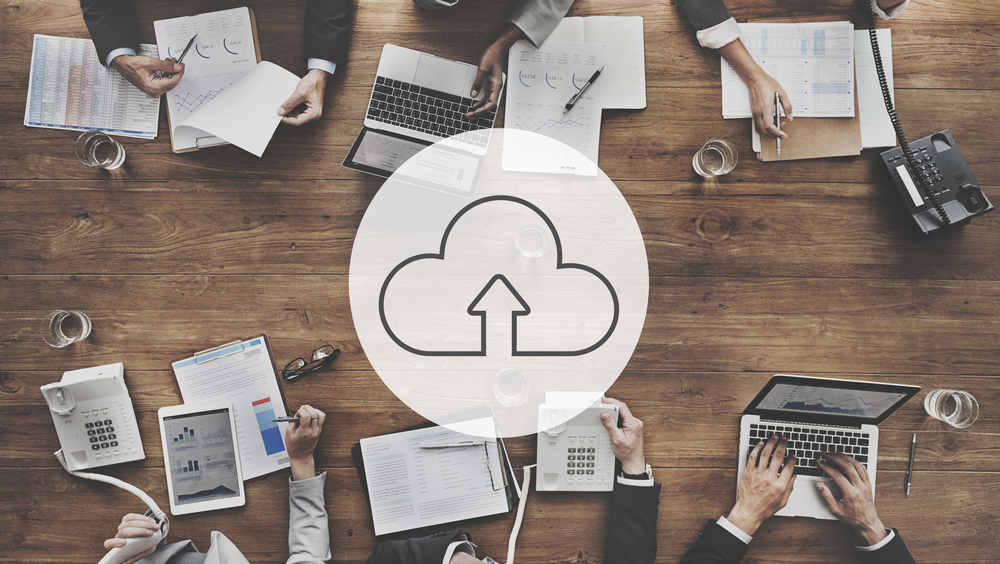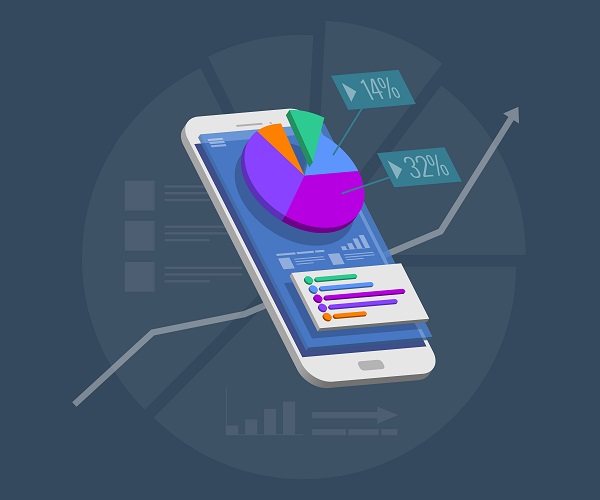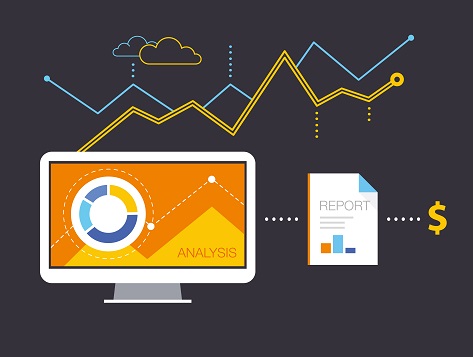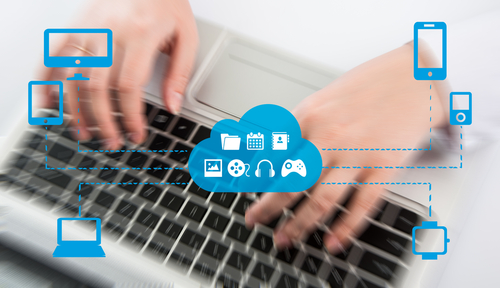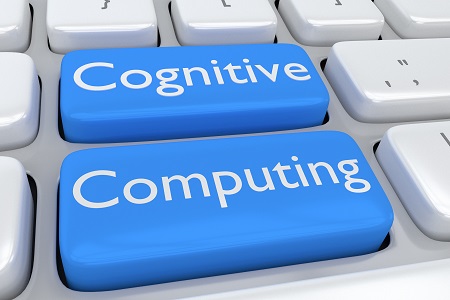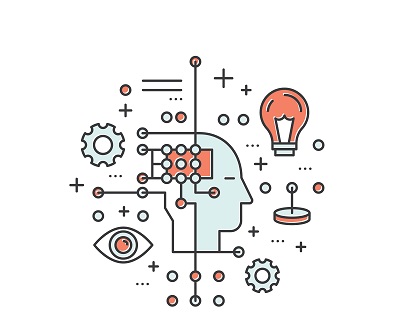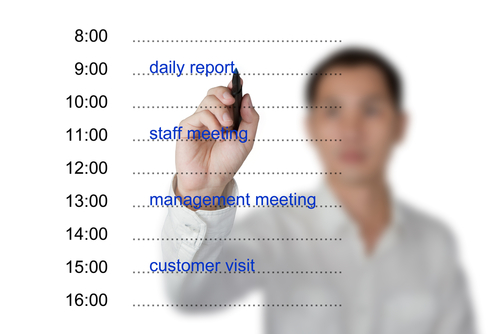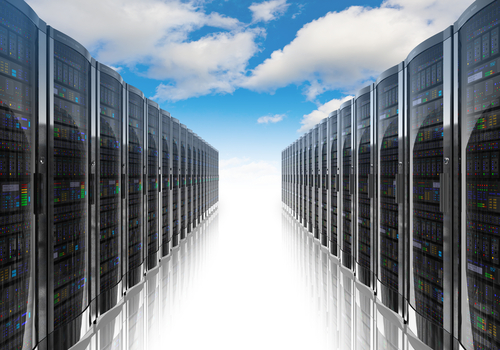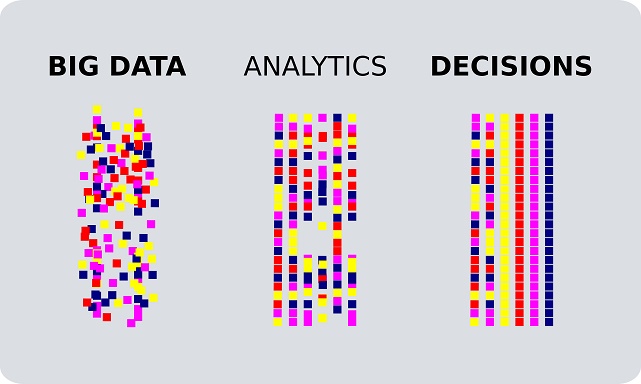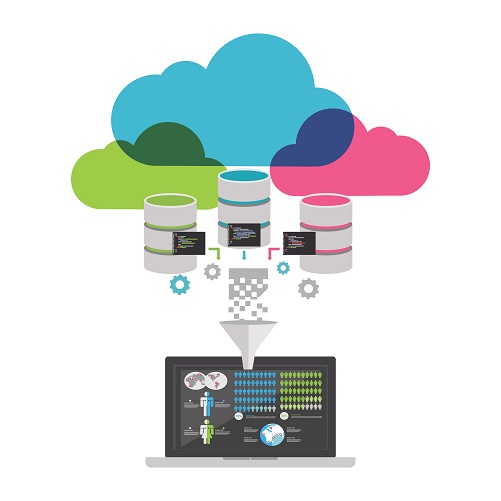Tag: big data analytics
5 Technology Trends Every Travel and Tourism Business Needs To Invest In 2019
If we look at the sheer number of customers involved, the travel and tourism sector is one of the world’s largest industries. Back in 2017, it was a USD 1.6 trillion industry worldwide and over 1.32 billion international tourist arrivals were recorded worldwide according to emigration agencies. With such a phenomenal target audience base, businesses that want to flourish in this sector from hotels to travel companies to flight and cruise operators are continuously seeking new differentiators to win customer loyalty and survive profitably in the face of intense competition. And the competition is not just from peers in the industry.
Today, there are thousands of technology companies that have transformed the conventional travel and accommodation experiences for the common man by shifting the power of choice to the consumer from the hands of the service provider. To remain viable, traditional players in this industry have also shifted their investment priorities to technology that helps them provide better services with lower costs.
There has been a paradigm shift in how the travel and tourism industry works. What was once a monopoly of travel agents, today an end customer has the freedom to chart their own travel itinerary, arrange every necessary and ancillary service throughout their journey and ensure hassle-free travel experiences anywhere in the world.
The best part is, they can accomplish all this from the comfort of their homes using just their mobile phones. The proliferation of smartphones and a large digital savvy guest base necessitates players in this industry to continually invest in technology platforms that help them connect with potential customers across all channels, be it booking offices or online portals.
Today, we shed light on the top 5 emerging technology trends that travel and tourism-related businesses need to keep a close watch and invest wisely if they want to remain successful. Here are our picks:
1. Mobile Friendly
Did you know that over 47.96 percent of global web page views have been from mobile devices alone? This implies, that irrespective of which travel or tourism service you offer, you need to ensure that every presence you have for your business on the internet needs to be mobile friendly. Additionally, businesses need to ensure that they offer customers access to critical services on their premises through smartphones. An example would be a hotel offering customers to book ancillary services like spa, cabs, recreational activities, restaurant, and in-room dining services, etc., through a mobile app rather than having to call up the reception to do so.
Check out the video to learn more about how hotels are embracing technology to provide better customer service.
This video is made using InVideo.io
Some of the world’s most premier hotel chains have gone one step further by creating smart room keys that help guests unlock their rooms with just their mobile phones or a wearable device like a smartwatch. Even more, if such services can be offered by integrating the hotel’s technology back-end with popular services that users already use will ensure greater customer satisfaction as they need not download another app on their mobile phones to use the new feature.
Related Reading: Find how realtors are winning tenants with innovative mobile apps.
2. Artificial Intelligence
Gartner predicts that by 2020, consumers worldwide will handle 85% of their interactions with a business without the need of a human agent. For the travel and tourism sector, customer engagement and the subsequent experiences are critical for continued success. AI can be a game changer in this regard. By serving multiple roles ranging from a virtual assistant or chatbot, AI enabled platforms to help businesses keep their businesses open to customer queries 24 X 7 without dedicated human staff.
Considering the fact that the travel and tourism industry is a global sector with business opportunities available without time zone restrictions, AI becomes even more special. By using machine learning, AI systems can study user behavior and offer automated recommendations and services during interactions for booking a cab or tickets to a nearby destination and so on.
AI can also help businesses automate much of their intense manual data management jobs like generating reports for management, staying compliant with local and regional laws, facilitating verification of guest background and biometrics and much more. The list is endless and in the coming years, AI will turn into a significant contributor to profits for key players in the travel and tourism industry.
Related Reading: Read on to know the top artificial intelligence trends of 2019.
3. Immersive Visual Experiences
What if you could offer a virtual tour of your hotel or resort or a popular tourist destination where your business operates, to a potential customer in another country? Well, this is possible today, thanks to the advancements in immersive visual technology like augmented reality (AR), virtual reality (VR) and mixed reality (MR). It can be used for virtual simulations of travel destinations and accommodation facilities and even for interactive content marketing campaigns. With hardware costs going south every year, more users would buy devices that facilitate such experiences.
The popular Oculus Rift that had a hefty price tag of $799 when it launched in 2016 now sells for just $199 and this is an indication that hardware hindrances will not deprive AR, VR and MR technologies of their worth in the coming years. Businesses can offer interactive opportunities for other ancillary service providers to market their services in their properties like for example, a hotel chain, allowing AR-enabled shopping from popular brands for their guests or running promotional campaigns of nearby attractions that guests can explore virtually before making a decision. The possibilities are limitless.
Related Reading: Check out which technology has a better future: AR or VR
4. Internet of Things
Today, technology is moving from the bounds of computers and smartphones and integrating into almost every physical environment surrounding us. The Internet of Things (IoT) paradigm has opened new possibilities for improving customer experiences considerably. The travel and tourism sector too can leverage the potential of IoT to serve their customers more efficiently. From hotels offering a smart room environment controls to guests and airlines facilitating smooth check-in and boarding through beacons within airports, the number of offerings in this segment is numerous.
With the advancement made in hardware sensors, it is possible to gather a large volume of data from a customer or potential customer’s physical surroundings and businesses can use this data to offer personalized services. With an increased focus on data security, today’s IoT platforms will assure end users of personalized services without the risk of unauthorized access by imposters. From an operational standpoint, businesses such as airlines and hotels can use IoT platforms to automate several key operational tasks such as maintenance activities to improve their efficiency, save costs and reduce manual labor risks in the long run.
Related Reading: Read along to know where and why should you invest in IoT.
5. Big Data Analytics
From the huge gamut of data generated by guests and travelers, businesses in the travel and tourism sector can derive insights that help them make the best decisions for growth. This is facilitated by powerful big data analytics platforms that are today available even on a subscription basis. This makes the proposition sweeter for even smaller businesses as they can now compete with the giants in their respective business community by gaining vital knowledge about customer behavior, their spending habits, and their interests.
By analyzing data on past travel experiences, hotels and travel companies can provide personalized recommendations to customers and aid their decision-making process considerably. These systems allow travel companies to suggest the most profitable itineraries for both them as well as the customer making it a win-win situation for everyone. It also allows them to segregate travelers, according to several criteria such as cost preferences, location preferences, interests and much more. This allows them to create personalized marketing and promotional campaigns for each segment and gain more business opportunities.
Related Reading: Check out how big companies are using Big Data to boost business
The travel and tourism sector will undoubtedly rank among the largest in the world when it comes to investment potential. However, the future of this industry will largely be decided by who makes the wisest technology investment decisions among competitors. By converging human interactions and technology, businesses in this sector can serve their customers better and run their infrastructure smarter.
The choices are numerous and it requires an expert advisory partner for travel and tourism companies to realize the full value from their technology investments. This is where our consultants can be your differentiator. Talk to us today to know how your business can survive and succeed in the age of digital disruption by investing intelligently in technology that matters most to your business.
Stay up to date on what's new

Featured Blogs
Stay up to date on
what's new



Talk To Our Experts
In this era of rapid digital transformation, new technologies have opened up opportunities and created challenges, fundamentally transforming customer experiences, operating models and the work environment.
While the scope, scale, and complexity of business technology has evolved at an exponential rate, sophisticated technology has also become more accessible to a wider audience. Such accessibility enables a thriving digital culture which can be a source of competitive advantages across all business functions – recruiting, training, sales, sourcing, manufacturing, logistics, marketing and more. While in the past, technology providers (like us at Fingent) predominantly worked with IT departments, today we often work with functions like finance, sourcing, HR, project management and logistics, with minimal or no involvement of the customer’s IT team.
More importantly, access to robust technology is also no longer exclusive to large enterprises. Commoditization, outsourcing, and good connectivity have driven down costs, making technology accessible to businesses of all sizes, across the globe.
By providing an attractive basis for innovation, improving cost efficiency and differentiation, the synergy between technology and business processes is no longer optional, but a must-have.
Studies reveal that 55% of startups have already adopted a digital business strategy compared to 38% of traditional enterprises.
While the specific technologies that can be leveraged for business growth, will vary widely across organizations, there are a few common themes that business leaders can consider.
The Cloud democratizes Information Technology
Cloud computing is really the internet as we use it today. Dropbox, One Drive, Facebook, INFINCE, AirBnB, Twitter, Uber…. Are all in the cloud. It is really an umbrella term that covers a variety of on-demand computing and storage services as IaaS (Infrastructure as a Service), PaaS (Platform as a Service) or SaaS (Software as a Service).
Related Reading: Choose the right Cloud service model for your Business
Cloud technologies help discard or avoid the need for physical IT infrastructure, and on-premise support structures for computing capabilities, by virtualizing these across server farms or data centers. Using cloud-based services providers, businesses can leverage IT assets as programmable resources, which are global and scalable on demand. This allows a business to access or lease computing resources and storage power far greater than what it may have been able to access on local infrastructure, while still being able to scale up or down in a cost-efficient manner.
Consider V Locker, an Australian firm providing automated locker solutions for freight deliveries. V Locker manages lockers for B2B customers across the globe from Australia, using IaaS (Infrastructure as a Service) and PaaS (Platform as a Service).
On the cloud, multi-tenancy enables effective resource utilization, reducing costs to make the cloud a cost-efficient option for most organizations. For e.g. SaaS (Software as a Service) Property Management service Simple Rent uses multi-tenancy to provide a low-cost, high quality offering to the commercial and residential rental business.
While the Enterprise IT spend on the cloud is relatively small, it is the fastest growing segment, slowly replacing on-premise systems. At one end of the spectrum, Oracle and Microsoft are slowly shifting legacy products to the cloud, pushing many large enterprises to follow suite. At the other end, solutions like Infince have taken enterprise cloud a step ahead by blending SaaS and IaaS for small/medium sized businesses, providing a cost-efficient, secure cloud-based alternative to expensive alternatives. The cloud makes robust enterprise technology accessible globally to businesses of all sizes without the need to invest in expensive infrastructure or large teams.
Data – Big, Small and everything in between
With the relentless digitization of business and society, we have access to extraordinarily large amounts of data. Transactional data (from digitized business processes via ERP, CRM, HRMS, POS, and similar systems), Social data (Facebook, LinkedIn, YouTube, Twitter and the like) and Operational data (from connected devices and IoT systems) can be leveraged to provide better customer experiences and improve operational efficiency. The key is not just to gather data, but to leverage it with analysis and insight. From an organizational perspective, this can require experts from multiple disciplines to work together to peel back multiple layers of data and insight.
Related Reading: Find out how Big Data is changing the Healthcare sector.
Success depends not on the indiscriminate application of technology to data, but on a coherent approach, of identifying critical data that matter, and using the right technology to generate relevant and actionable insights, delivered to key stakeholders in the value chain, in real time.
In the realm of marketing, successful big data analytics manifest as tracking everything a customer or prospect does and generating real-time alerts to the marketer or a front line executive dealing with the customer. For instance, if the customer walks into a store, the automated analytic solution alerts the sales executive immediately, and everything related to the customer, including their preferences, purchase history, and more, surfaces to the executive’s tablet. Likewise, if a prospects click on an ad or downloads an app, the marketer gets an alert immediately, enabling them to engage the customer proactively, to close the deal or move the prospect up the lifecycle.
From Digitization to Digitalization to Digital Transformation
Digitization is the conversion of analog physical objects into digital goods. Paper to PDF or Doc, or physical cash digitized to mobile payments, physical signatures to electronic signatures – these are all digital manifestations of non-digital objects. Digital goods have low marginal costs, are non rival, and can easily be bundled with other digital or non-digital products. Consider online user manuals, learning management systems. Usually the first step in an organization’s technology journey, Digitization sets the foundation to enable Digitalization and Digital Transformation.
“Digitization and digitalization are two conceptual terms that are closely associated and often used interchangeably in a broad range of literature. There is analytical value in explicitly making a clear distinction between these two terms.” – Scott Brennen and Daniel Kreiss
Digitalization is about leveraging technology to create, enable or transform a business process- usually leading to one or more of- the discovery or new opportunities, reduced risks or efficiency gains. For example, field service management solutions like ReachOutSuite help deploy digital forms to field technicians across various locations. It reduces the risks of revenue loss due to errors, inefficient scheduling and underprepared staff. This service also increases efficiency by maximizing staff utilization and getting more jobs done pre-staff. It further enables the identification of new opportunities by enabling techs and backend admins to understand customer experience better. Digitalization of business processes is par for the course these days with a plethora of packaged and custom built software available for enterprise planning, managing business finances, training, projects, customer management, and human resources.
Find how ReachOutSuite can make a work order manager’s life simpler.
- CRM systems coordinate business processes that are key to generating leads, converting them into prospects, and, subsequently, into regular customers. Additionally, CRM software solutions supply business managers with data processing and analytic tools to help refine marketing strategies, improve customer service and track overall organizational performance. Through centralization of business data, CRM software tools streamline the decision-making process and automate repetitive tasks.
- Project management software eliminates laborious paperwork and tedious planning processes. With the right tools, businesses can control projects costs and improve the efficiency of related operations. Technology automates most project management processes to make it affordable and practical for any type of business. The main benefits of implementing project management software include – Easier project planning, monitoring and tracking, Improved collaboration, Better organization, and future planning
- ERP systems boost productivity and promote business growth in two primary ways. First is automating business processes to improve accuracy and save time for all employees. Second, ERP systems unify data generated by the business and make it available to decision-makers and other managerial parties throughout th
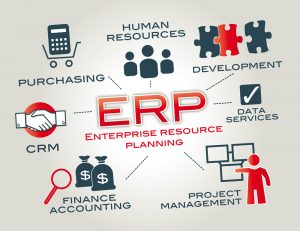 e firm. It eliminates data sharing problems among departments and makes the information accessible to everyone.
e firm. It eliminates data sharing problems among departments and makes the information accessible to everyone.
Digital transformation is about leveraging digitization and digitalization to transform a business unit’s or an organization’s approach to business. This can involve one or more of – new business models, overhauling customer experience, radically different manner of service or product delivery. The transformation is driven by the business, and not by the IT team. For instance, consider Replika, which connects brick and mortar sales to the digital realm, transforming the way sales is managed for retail. Emerging technologies will create new business models that may be hard to understand or foresee today. For instance, digital securities based on blockchain based technologies can unbundle ownership of analog assets like property or gems, while making it possible to bundle diverse asset classes to create new portfolios for investment. Such digitization of previously illiquid assets creates new customers, new strategies and new business models that may not be possible to fully comprehend today.
Related Reading: Find out how INFINCE is the ultimate digital transformation for small business of today.
In conclusion
Technology is a disruptive force. In the current ever-changing and multifaceted business environment, technology can not only help improve your businesses’ agility but can also provide cost-effective means to innovate your products and services, improving customer experience. The key is to adopt the right tools and partners, while actively planning the change and deployment.
Stay up to date on what's new

Featured Blogs
Stay up to date on
what's new



Talk To Our Experts
The Healthcare sector is booming at a faster rate and the necessity to manage patient care and innovate medicines has increased synonymously. With the rise in such needs, newer technologies are being adopted in the industry. One such major change that might take place in the future is the use of Big Data and Analytics in the Healthcare sector.
According to an International Data Corporation (IDC) report sponsored by Seagate Technology, it is found that big data is projected to grow faster in healthcare than in sectors like manufacturing, financial services or media. It is estimated that the healthcare data will experience a compound annual growth rate (CAGR) of 36 percent through 2025.
Market research have shown that the global big data in the healthcare market is expected to reach $34.27 billion by 2022 at a CAGR of 22.07%. Globally, the big data analytics segment are expected to be worth more than $68.03 billion by 2024, driven largely by continued North American investments in electronic health records, practice management tools, and workforce management solutions.
Here are 5 ways in which Big Data can help and change the entire scenario of the Healthcare sector.
1. Health Tracking
Big Data and Analytics along with the Internet of Things (IoT), is revolutionizing the way one can track various user statistics and vitals. Apart from the basic wearables that can detect the patient’s sleep, heart rate, exercise, distance walked, etc. there are new medical innovations that can monitor the patient’s blood pressure, pulse Oximeters, glucose monitors, and more. The continuous monitoring of the body vitals along with the sensor data collection will allow healthcare organizations to keep people out of the hospital since they can identify potential health issue and provide care before the situation goes worse.

2. Reducing Cost
Big Data can be a great way to save costs for hospitals that either over or under book staff members. Predictive analysis can help resolve this issue by predicting the admission rates and help with staff allocation. This will reduce the Rate of Investment incurred by hospitals and in fact help utilize their investment to the max. The insurance industry can save money by backing wearables and health trackers to ensure that patients do not spend time in the hospital. It can save wait times for patients since the hospital will have adequate staff and beds available as per the analysis all the time. Predictive analytics also helps cut costs by reducing the rate of hospital readmissions.
According to a recent report by the Society of Actuaries, 47% of healthcare organizations are already using predictive analytics. It is also noted that over 57% of healthcare sectors believe that predictive analytics will save organizations 25 percent or more in annual costs over the next five years.
Healthcare & Big Data Facts: McKinsey & Company report states that after 20 years of steady increases, healthcare expenses now represent 17.6% of GDP, ie. nearly $600 billion more than the expected benchmark for the U.S. size and wealth.
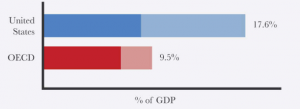
3. Assisting High-Risk Patients
If all the hospital records are digitized, it will be the perfect data that can be accessed to understand the pattern of many patients. It can identify the patients approaching the hospital repeatedly and identify their chronic issues. Such understanding will help in giving such patients better care and provide an insight into corrective measures to reduce their frequent visits. It is a great way to keep a list and check on high-risk patients and offer them customized care.

4. Preventing Human Errors
A lot many times it has been noted that the professionals tend to either prescribe a wrong medicine or dispatch a different medication by mistake. Such errors, in general, can be reduced since Big Data can be leveraged to analyze user data and the prescribed medication. It can corroborate the data and flag potential out of place prescription to reduce mistakes and save lives. Such software can be a great tool for physicians who cater to many patients in a day.
Healthcare & Big Data Facts: The Centers for Medicare and Medicaid Services prevented more than $210.7 million in healthcare fraud in one year using predictive analytics.
5. Advancement in Healthcare Sector
Apart from the current scenario, Big Data can be a great benefit for advancement in science and technology. For Healthcare, Artificial Intelligence, such as IBM’s Watson can be used to surf through numerous data within seconds to find solutions for various diseases. Such advancement is already in progress and will continue to grow with the amount of research collected by Big Data. It will not only be able to provide accurate solutions, but also offer customized solutions for unique problems. The availability of predictive analysis will assist patients traveling to a particular geographical location by studying similar patients in that area.
Healthcare & Big Data Facts: Effective use of big data could add $300 million per year to the healthcare industry.
Thus, to sum up, Big Data increases the ability of the healthcare sectors to:
- Predict Epidemics
- Cure Disease
- Improve Quality of Life
- Increase Preventable Care
- Begin Early Preventive Care
- Spot Warning Signs Sooner
Numerous studies and researches prove that technology has tremendously transformed the healthcare sectors. Professor and researcher Ronda Hughes too explains in her research how big data is improving health services.
Improving health outcomes with big data | Source : TEDxUofSC
Although most part of Big Data generated is not fully utilized currently due to limitations of the toolset and funds, it is definitely the future. Invest in the future and use Big Data Analytics to be a part of an evolving Healthcare Industry by seeking an experienced company such as ours to assist you.
Related Reading: Find out how big companies are using the power of Big Data to enhance customer experience.
Supercharge your field operations with ReachOut
Cloud-based field service platform to optimize service delivery for efficiency and cost savings. Schedule jobs, dispatch technicians, generate tickets, quotes, invoices & more.
Start NowStay up to date on what's new

Featured Blogs
Stay up to date on
what's new



Talk To Our Experts
If your company is dealing with Big Data, Data analytics and visualization is a must-have tool to understand and gain insights effectively. There are several tools available in this sector that promise to convert raw data and produce it as solutions that are easily understandable. These solutions can be in the form of charts, videos, infographics or even highly engaging and intuitive presentation that uses Virtual Reality and Augmented Reality (VR & AR). Here are the top 7 data analytics and visualization tools that you can hire to get the most out of your data.
1. Tableau
Tableau is one of the most widely used data visualization software due to its user-friendly, intuitive design, and excellent official supporting documentation. This data analytics and visualization tool are available in five different versions – Desktop, Server, Online, Mobile, and free-to-use Tableau Public. It has the capacity to produce interactive visualizations that are compatible with huge and very fast-changing data sets used in Big Data operations involving artificial intelligence and machine learning applications. It is designed to work great with almost all advanced database solutions such as Hadoop, Amazon AWS, My SQL, SAP, and Teradata.
2. Sisense
This tool is smartly designed to provide a full stack analytics platform with ease of use. The interface offers users a chance to simply drag and drop charts and more complex graphics for achieving interactive visualizations without much of a hassle. The tool has the capability to gather data from multiple sources and query them instantaneously along with an option to share the dashboard across organizations. Sisense is a powerful tool for people who are experienced in this field and can be a little overwhelming for newcomers.
3. Plotly
Plotly is a web-based data visualization platform that lets the user create simple to complex charts directly inside their web browser. It offers a clean, intuitive and fully-featured interface for free, but its commercial package provides more user-friendliness and support. Its ability to enable more complex and sophisticated visualization is a direct result of integration with analytics related programming languages such as R, Python, and Matlab.
4. FusionCharts
This Javascript-based data analytics and visualization tool has the ability to produce 90 different chart types and integrates a large number of platforms and frameworks to offer optimum flexibility. It is one of the leaders in the paid-for market simply because it offers many live templates where users can simply plug in their data instead of starting one from scratch.
5. Google Charts
Google is at the forefront of technology and it stays the course by providing an entire set of data visualization tools that support various data formats including geolocation and offers a variety of outputs. But keep in mind that Google Charts are for people who have worked with data before and can code in JavaScript to make the best use of this amazing tool.
6. QlikView
QlikView tool is a major vendor that competes for supremacy with Tableau since it also provides a wide feature range and high customization setup. It does take time to get used to it, but can be very powerful when used to its full potential. There are numerous third-party resources available online for this clean and clutter-free tool. It additionally offers powerful business intelligence, analytics, and enterprise reporting.
7. Datawrapper
Datawrapper is the perfect tool for media organizations that are looking for creating simple charts to present statistics. It’s simple and clean interface allows easy CSV data upload, to create simple charts and maps that can be quickly embedded into reports.
Data analytics and visualization tools are abundantly available and seeking the best one for your organization can be difficult. It is better to seek the expertise of consultants such as our organization to get the most out of your Big Data.
Stay up to date on what's new

Featured Blogs
Stay up to date on
what's new



Talk To Our Experts
The year 2017 has been eventful for digital transformation, with technologies such as Big Data coming of age. Digital transformation promises to be more disruptive in 2018, as evident from the following predictions.
1. IoT Becoming Mainstream
The much-hyped IoT will walk its talk fully in 2018. About 8.4 million “things” are already part of the IoT ecosystem, a 30% increase from last year’s levels. Enterprises will start using IoT to deliver better products, services, and insights. IoT will permeate to the masses, and become mainstream and commonplace.
Among specific sectors, IoT will revolutionize analytics in a big way, driving new smart solutions. A few possibilities include hyper-efficient fleet operations, intelligent traffic signals, and more. Tech giants such as Microsoft, IBM, SAS, and SAP are all heavily investing in IoT Analytics, offering a portent of the things to come.
2. Edge Computing Offers Effective Real-Time Processing Solution
The cloud and Big Data analytics analyze tons of data seamlessly. However, the sheer volume and velocity of data create time lag and some inefficiency. For instance, the cloud, for all its advantages, is not viable for IoT powered smart drones, autonomous vehicles, and other AI-powered smart devices. These devices need real-time and instantaneous data processing. Sending data from these devices “all the way” to the cloud is an inefficient and impractical method of processing data.
Edge computing, which performs data processing at the edge of the network, near the source of the data, promises effective solutions to the shortcomings or limitations of the cloud and big data. Edge computing, for instance, allows IoT powered devices to connect and communicate instantly and seamlessly.
Industry biggies, such as HPE and CISCO have already rolled out hardware and software to actualize Edge computing. IDC predicts 40% of all computing to happen at the edge in the next couple of years.
3. Enter the 5G Network
4G or fourth-generation wireless, synonymous with LTE (Long Term Evolution) technology, went mainstream in 2017. 5G of fifth-generation wireless will go gain ground in 2018. The need for hyper-connectivity and IoT propels the need for 5G.
The Next Generation Mobile Networks (NGMN) Alliance defines 5G as “an end-to-end ecosystem to enable a fully mobile and connected society.” 5G is not an incremental upgrade over 4G or LTE.
While the 4G focus is on raw bandwidth, 5G focuses on pervasive connectivity and super-dense network, enabling even faster and resilient access to the Internet even from the remotest caves or desolate hills. Unlike the hitherto monolith networks entities such as 2G, 3G or 4G, 5G co-opts a combination of technologies, including 2G, 3G, LTE/4G, LTE-A, Wi-Fi, and more. While emerging technologies and solutions, such as IoT, connected wearables, augmented reality and immersive gaming places a great strain on incumbent networks, 5G will run these technologies seamlessly.
Industry majors such as Sony and Samsung are investing in Gigabit LTE, the stepping stone between the incumbent LTE and 5G. The already well-entrenched Qualcomm Snapdragon technology powers Gigabit LTE. However, 5G will become a household technology only by 2020.
4. Blockchain finds Its Way
Blockchain, the secure transaction ledger system distributed across a network of computers, rather than under any single entity, will finally become mainstream by 2018. The financial industry has already started to embrace blockchain in a big way. The healthcare, entertainment, and hospitality sectors are on the verge of embracing it in a big way. Dubai is rapidly moving toward becoming the world’s first-ever blockchain-powered government by 2020.
5. Artificial Intelligence Becomes Mainstream
The market size for AI is set to double up from $2420 million in 2017 to $4066 million by 2018.
Solutions powered by Artificial Intelligence are already popular. Artificial Intelligence already powers many popular solutions, such as Alexa, Siri, Salesforce Einstein CRM, IBM Watson, SAP Leonardo, Netflix, Amazon AI, Cortana Intelligence Suite, and various customer service chatbots.
Companies will continue to roll out cutting-edge solutions based on Artificial Intelligence, especially to implement smarter and cheaper automation. The scope of artificial intelligence would expand to encompass everything from emails and content generation and from industrial manufacturing to smart grids. In fact, major companies will embed Artificial Intelligence into their core operations. Fueling the growth of Artificial Intelligence is the spread of open-source solutions. Artificial Intelligence cannot easily be integrated into closed systems.
With more investments being made betting on Artificial Intelligence, Virtual Reality is losing the race significantly because Artificial Intelligence offers whatever Virtual Reality offers, in a much cheaper and better way. For instance, companies can apply 3-D visualization to train, pitch, and envision new products in a much better way than what Virtual Reality offers.
6. Anything as a Service
XaaS or “Anything as a Service” is now within the realms of possibility. The cloud-based services market now encompasses software, infrastructure, and everything else. The latest to enter the “as a service” market is a framework! Framework-as-a-Service (FaaS), which falls between SaaS and PaaS is a customizable cloud-based platform. Users may indulge in rapid prototyping, visualization, and other fast fail methods to discover whether a concept or strategy will work or not. Companies get to know the result of their initiative, without having to spend time and effort, doing it the hard way.
Side-by-side with FaaS, workplace-as-a-service (WaaS) and unified-communications-as-a-service (UaaS) will also become mainstream in 2018. Remote workplaces, powered by WaaS, will rise in a big way by 2018.
7. Low Code Platforms to Soar in Popularity
Low code development platforms (LCDP) will net a total revenue of $6.1 billion by 2018, and over $10 billion by 2019. These figures are impressive when compared with the total revenue in 2015 which was just $1.7 billion.
LCDPs allow creating apps through a configuration of functions, and intuitive drag-and-drop options, rather than by hand coding. The obvious advantage is ease of development and accelerated delivery of business applications. Acute shortage of talented programmers fuels the growth of LCDPs.
Some popular LCDPs, as of now, are Appian, Mendix, Google App maker, and Zoho Creator. The growing popularity of such low-code development platforms will spur ‘citizen development’.
Technology is always fluid. Companies who embrace the latest technology head-on to deliver better solutions for its customers stand to reap dividends. Companies who do not change will surely be swept away into obsolescence.
Stay up to date on what's new

Featured Blogs
Stay up to date on
what's new



Talk To Our Experts
Cognitive computing in a broad sense refers to software mimicking the functioning of the human brain, to make better decisions.
Computers have caught on ever since its inception, owing to its ability to undertake lightning-fast calculations, much beyond the range of human capabilities. However, computing devices face a serious limitation in not being able to accomplish tasks humans take for granted, such as understanding the natural language or recognizing unique objects in an image. While artificial intelligence offers a start in this direction, cognitive computing represents the coming of age in this front.
Cognitive computing, in a sense, represents the third era of computing, with computers that could tabulate sums the in-thing in the 1900s, to programmable systems in the 1950s, and now cognitive systems.
Personal digital assistants such as Siri, already present in smartphones come close to cognitive computing but are not true cognitive systems. Such systems can only respond to a preset number of requests, whereas true cognitive applications give a thoughtful response, without being restrained to a preprogrammed response set.
How Do Cognitive Applications Work?
Cognitive computing aims to simulate human thought processes in a computerized model. To this end, cognitive applications use deep learning algorithms and neural networks and leverage the latest technological solutions such as data mining, natural language processing, and pattern recognition.
Cognitive applications draw on multiple sources of information, including structured and unstructured digital information, sensory inputs such as visual, gestural, auditory, information, sensor-provided information, and more. It then processes the gathered information by comparing it to the set of data it already knows. As such, the more data the system encounters, the more it learns, and the more accurate the system becomes, over time.
Cognitive computing applications integrate data analysis with adaptive page displays (AUI) to tailor content for the specific audience and specific situations.
IBM Watson, one of the earliest approaches to cognitive computing, offered a path-breaking combination of natural language processing, machine learning, and knowledge representation. Watson ingests questions or inputs in natural language mode, search its repository for information, develops and analyze hypotheses on its own, and generates answers, also in natural language mode. What made Watson successful was not just the combination of the multiple capabilities, but the seamless and powerful integration of such different capabilities in a way it influences each other.
Basic Characteristics of Cognitive Applications
Cognitive applications are a cut above ordinary applications, as evident from the following basic features or characteristics.
Adaptive: Cognitive applications are adaptive, capable of integrating information around its ecosystem, as it changes. These systems feed on dynamic data in real time, or near real-time, to master ambiguity and unpredictability. It adapts to the changing goals and requirements of the enterprise, which is common in today’s highly fluid business environment.
Interactive: Cognitive applications interact easily with users, and also with other processors, devices, and cloud services. Such seamless interactions allow users to make explicit their requirements comfortably, and the network ascertains the requirements automatically to some extent.
Iterative: Cognitive applications are iterative and stateful. These apps ask questions or find additional sources by itself when a problem statement is ambiguous or incomplete. It also remembers previous interactions, and pulls in suitable information relevant to the current context, from such corpus.
Contextual: Cognitive computing applications understand and identify contextual elements such as location, time, meaning, syntax, processes, regulations, user’s profile, and more, connected to its ecosystem. The apps act on the basis of such information, automatically.
Dark Data Compatibility: Cognitive computing systems have the capability to deal with “dark data.” Traditional business intelligence and analytics solutions are mostly unable to comprehend social media postings, electronic medical record notes, electronic fitness device readings, unstructured images, and the bulk of general data generated by users in normal day to day settings today. Cognitive Computing apps process such multi-structured and unstructured dark data, to pull out non-obvious insights and subject it to analytics. Combining such dark data with the readily available structured information such as customer records unearth patterns, relationships, and other contextual associations not discernable otherwise.
Cognitive Applications in Action: Use cases
While cognitive computing has been around for quite some time, it is only recently, with the advancements in technology giving it a boost, that it has come to the mainstream. Several practical use cases have already emerged.
Many businesses now use cognitive computing applications to connect with their customers and other stakeholders at a more personal level and offer highly relevant recommendations. Such apps modify the recommendations automatically as they understand more about the stakeholder, and as the situation unfolds. Furthermore, such apps pick up subtleties that traditional analytics would miss.
IBM Watson, one of the earliest manifestations of a cognitive computing platform, already finds widespread use in healthcare. The cognitive computing platform collates the entire gamut of knowledge around a medical condition, such as patient history, journal articles, best practices, diagnostic tools, and more. It then analyzes the information, and offer a recommendation in sync with the changing condition of the patient. It is virtually impossible for any human to possess such vast range of information, leave alone analyze it. Doctors may leverage such insights to adopt evidence-based treatment options considering all factors, including the individual patient’s presentation and history. This is a big upgrade from the present scenario where the doctor makes educated guesswork, based on grossly incomplete information, with the decision based on the doctor’s limited range of knowledge. The insights available through cognitive computing enable even fresher doctors to perform as effectively as experienced specialists.
Cognitive computing applications are also making its mark in a big way to improve consumer behavior analysis, facilitate personal shopping bots, in education, diagnostics, and other areas. A good real-life example is Hilton Hotel’s Connie, the first concierge robot, which helps visitors with regards to hotel information, local attractions, and more, with questions posed in natural language rather than computing language.
Cognitive computing delivers positive ROI. Enterprises have already succeeded in applying it to convert even traditional cost centers such as customer care to profit centers. For instance, a packaged goods company applying cognitive computing to resolve customer problems automatically, pre-empting the usual practice of customers raising a ticket, could achieve a 30% reduction in tickets. Considering the cost of each ticket was $24 to $160, the savings are substantial.
Enterprises adopting cognitive computing, however, need to develop purpose-built applications to address specific use cases relevant to their stakeholders. Success depends on not just technical competence, but the extent to which the cognitive computing technology is interwoven with the business or customer needs.
Stay up to date on what's new

Featured Blogs
Stay up to date on
what's new



Talk To Our Experts
The relentless advancement of technology force a churn in many industries and the real estate sector is no different. As it is with most positive disruptions, technology facilitates doing things faster, cheaper, and more efficiently.
Online Services Make Processes Easy and Efficient
Many businesses have shifted entirely online, and other businesses facilitate online mode in a big way. Hitherto, the online component of real estate services has been mainly limited to property searches. However, things are changing, both in depth and scope.

Easy and seamless solutions are now available to conduct the entire process, right from property search to signing agreements online. Virtual Reality and Augmented Reality technology enable making virtual site visits, with annotations that offer even greater insights than an actual site visit would deliver. Collaborative suites make negotiations between agents, property owners and tenants easy, and methodical. Integrated payment options allow the tenant to make deposits and rents seamlessly, without the hassles of follow-ups and manual accounting. Many realtors already have their agreements online, with digital signatures.
For the realtor’s end, online technology makes things easier, convenient and more accurate. Big data analytics and the infusion of artificial intelligence allow realtors to score leads more accurately, predict what their customers want in a highly specific manner, and engage with them in a more customized way.
Field service apps enable field agents to connect with the head office, clients, and other stakeholders easily, on a 24×7 basis, addressing needs proactively, and solving issues in the bud.
An integrated platform, with a cloud-based backend and intuitive mobile apps for different stakeholders in the front end, and co-opting the latest technology such as Virtual Reality, is all set to become the technological backbone of an efficient and well run real estate enterprises in the near future, and is a priority for realtors seeking to take their business forward in an increasingly tech-centric world. Providers such as Zillow has already made a start, aggregating real estate data down to details on each available property, allowing consumers to learn everything about an interesting property, with just a few clicks or swipes.
Case Study: Self Showing App – an IoT application developed for Realtor
Greater Insights Lead to Stability and Predictability
The real estate industry is turbulent in nature, with cycles of oversupply and depressed prices, followed by high demand and prices going through the roof. Macroeconomic conditions such as recession can lead to a crash, followed by rebounds. The problem with such a scenario is nobody can predict the market.

However, things are changing, thanks to technology. Big data analytics, in combination with predictive analytics, can crunch data from a variety of sources and predict the future to a fair level of accuracy. If nothing else it may be able to predict future demand, enabling realtors to predict demand and supply accordingly, and thereby keep prices stable. Such insights would also enable governments and regulators to intervene in the real estate markets in a more proactive and meaningful way, protecting the interests of all stakeholders.
Advanced algorithms can even match home buyers or sellers with the most suitable agents, eliminating the wastage and inefficiencies associated with the present models, and sparing the need for relying on hunches or trial and error methods.
Also, real estate prices are now by and largely subjective. Big data analytics and an accurate insight into the demand-supply situation would enable price fixation in a more objective and scientific manner, benefiting everybody. For the realtor, it reduces the speculation and risk, leading to more stable and predictable ROIs.
For the success of back-end operations, big data analytics, infused with artificial intelligence and predictive analytics is just as important for a realtor.
Technology Propels Innovative Business Models
Technology has enabled rolling out a host of innovative business models, not possible before.
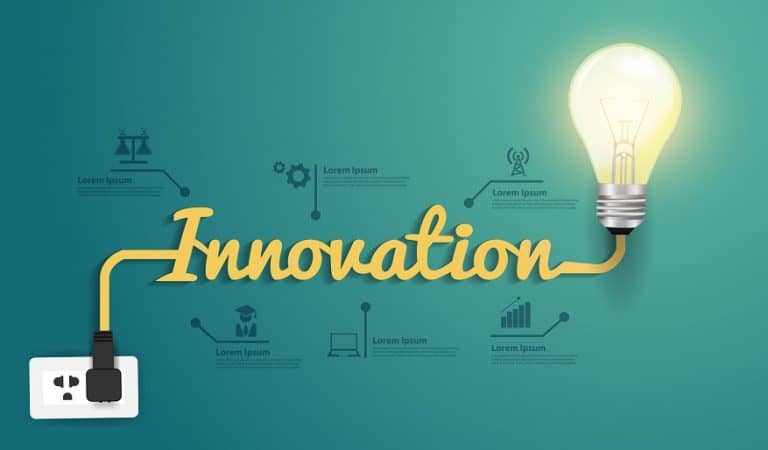
- Advanced big data analytics predict property prices to a great level of accuracy, taking away uncertainty and agents who over quote or under quote, infusing a much-needed transparency into the process, and reducing the hassles of price fixation – one of the biggest banes of the industry.
- Uber-like rental platforms, with pre-approved rating scores, background checks, standard agreement forms, and other normally time-consuming hassles, make rental just as easy as availing a taxi. Technologies such as online reservation systems and e-conveyance make property buying easy and hassle-free as well.
- Innovative cloud based models facilitate auctions or allow lessors or buyers to bid for the property. New apps that facilitate live stream without any time lag eliminate the need for physical auctions or meetings.
These models enable realtors to find new customers and close deals faster, increasing their ROI manifold. Most of these models are becoming very popular and are all set to become the benchmarks in the near future.
Property investment becomes Democratic
Technology is enabling a significant shift with regards to the investment model of real estate. Hitherto, the reality is the exclusive domain of high net worth investors, with small and medium investors priced out of the market due to the high ticket size of real estate investment and the cumbersome, time-consuming effort involved in the process.

New, online-centric ownership model allows even small investors to become part investors, or invest “bricks” in an edifice. Such investors earn ‘dividends’ in the form of rental returns and can trade their bricks like a traditional stock market. Naturally, a strong and robust online platform which facilitates a smooth and transparent buying and selling process, and takes care of all regulatory, legal and other formalities is the key to success of this model. It is a win-win situation, as a lesser entry ticket means more buyers flooding the market, enabling more sales, accelerating the sales cycle, and increasing the ROI.
The other end of such democratization is crowdfunding real estate projects. Crowdfunding now makes up less than 1% of total real estate investment volume, but such investments are all set to take a quantum leap.
Needless to say, this is all poised to become of the biggest disruptors of the realty market in the coming days, as the new models mature and gain a foothold.
Creating electronic solutions has its own set of challenges, and disruption of the existing business models would be met with resistance by those who benefit from the status-quo. However, such resistance would be like battling with the waves. As the saying goes “No army can stop an idea whose time has come.”
For all the possibilities enabled by technology, success depends on rolling out well-designed, robust systems. Real estate players need to tie up with a strong technical partner who has the expertise and know-how to deliver intuitive mobility and other solutions that leverage the latest technological capabilities to realize the desired business models and take customer satisfaction to a new level.
Stay up to date on what's new

Featured Blogs
Stay up to date on
what's new



Talk To Our Experts
The one thing everyone, from the CEO to the office janitor have in common is 24 hours in a day. It is how one utilizes the time that makes all the difference. A janitor, a driver, a clerk, or many other employees have their fixed role assigned to them, and a significant chunk of their job responsibilities are routine in nature. A CEO ideally spend time applying his talents, insights, and discretion at the higher facets of the job, establishing paradigms, exploring new business models, engaging stakeholders, monitoring the entire gamut of company operations, dabbling with innovation to do new things and do things better, and more.
Unfortunately, the reality is most CEOs restrained by routine and mundane tasks for significant chunks of time, leaving them with too little time to the things that really matter. The CEO has invested time and effort in acquiring knowledge, expertise, and experience, and the company is best served by ensuring the CEO utilizes these skills to the most.
Today, technology has improved to the extent automation has taken over many aspects of lives, which would have taken considerable manual effort and time not too long ago. The most common manifestations of automation in enterprises have been in data collection, big data analytics, robotics in manufacturing and assembly plants, and more. The latest technological developments such as Artificial Intelligence, Augmented Reality, and more infuse cognitive capabilities to automation, expanding the scope of automation in a big way than before. According to HBR, about half of all activities employees now do in enterprises can potentially be automated, with the existing technology.
While automation has 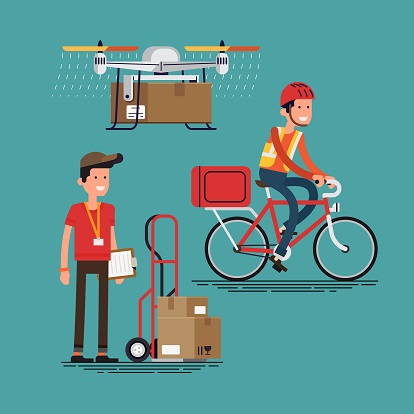 eliminated many low-end jobs, it has generated high-end jobs to compensate for it. For instance, Amazon’s drones eliminate the job of delivery agents, but generate new jobs in app development, big data analytics, AI and AR solutions, and more. As companies deploy automation, the focus shifts to the redeployment of the workforce, rather than massive unemployment, dispelling the fears in some quarters.
eliminated many low-end jobs, it has generated high-end jobs to compensate for it. For instance, Amazon’s drones eliminate the job of delivery agents, but generate new jobs in app development, big data analytics, AI and AR solutions, and more. As companies deploy automation, the focus shifts to the redeployment of the workforce, rather than massive unemployment, dispelling the fears in some quarters.
Likewise, there is big potential for change in the job profile of the CEO, who, in a sense is the embodiment of all functions taking place in the enterprise. About 25% of CEO’s time is currently spent on activities that machines could do.
The following are some of the CEO functions that machines could easily take over, even with the available technology.
Eliminating Administrative Tasks
Categorizing emails, approving bill payments, sending emails, and several other routine administrative tasks are an inevitable facet of life for any executive, and the CEO is not immune from it. If anything, the stakes are even higher with a CEO, considering the value of such tasks. An automated system, where an algorithm or a pre-set formula processes such tasks can eliminate or significantly reduce such burden, and improve accuracy as well.
Analyzing Reports and Data
Automation has made a lot of data entry jobs redundant. Typing data into a spreadsheet is no longer required when automa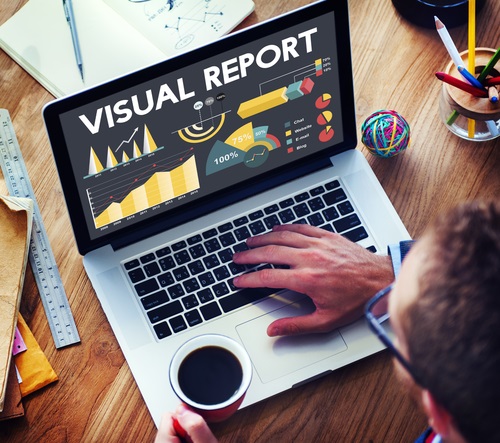 ted systems capture data from source automatically. However, someone still has to go through the reports generated from such data. A sizable chunk of the CEO’s time is spent going through various reports from all departments of the enterprise, and do the needful. For instance, a CEO looks at the reports on market trends and custom preferences and makes a decision on whether to increase production on a particular product line. The CEO looks at the financial reports and makes investment decisions. The CEO looks at marketing and sales report and devise new strategies, or makes changes to the marketing budget.
ted systems capture data from source automatically. However, someone still has to go through the reports generated from such data. A sizable chunk of the CEO’s time is spent going through various reports from all departments of the enterprise, and do the needful. For instance, a CEO looks at the reports on market trends and custom preferences and makes a decision on whether to increase production on a particular product line. The CEO looks at the financial reports and makes investment decisions. The CEO looks at marketing and sales report and devise new strategies, or makes changes to the marketing budget.
Developing algorithm based systems automate the task and give the CEO information in a drill-down capsule model, saving considerable time. An algorithm does the job just as well, and more accurately, leaving the CEO to either approve or veto the automated decision based on any additional insight he or she may have.
Scheduling Meetings
A sizable chunk of the CEO’s time is consumed in meetings. Scheduling meetings are the headache of the CEO’s secretary, but an automated system that schedules meetings proactively and syncs the schedule makes the life of the CEO more organized as well. In fact, an automated reporting system, integrated with video conferencing ability could eliminate the need for many meetings altogether, or enable meetings at-will, again saving a considerable chunk of CEO’s time, and prevent work getting blocked up, waiting for the meeting to happen.
Informing Decisions
Very often, the CEO is the sounding board of the enterprise, interacting with the top external stakeholders, such as board members, major shareholders and investors, government authorities, and even major customers. Developing an open enterprise system, where such stakeholders get revenant messages automatically or can access the required information at will, can take a load off the CEOs work. Establish rapport with people that matter is an important arsenal up the CEOs sleeve, and the ability to establish and improve such rapport increase when the CEO is armed with a powerful tool that can provide information to such stakeholders seamlessly.
People Management
The CEO, as the leader of the enterprise, invariably has people management tasks high on the list of priorities. While there may be no substitute for face-to-face interactions, automation can ease the process considerably. Having automated systems in place for appraisals, a robust HRIS system that updates all HR information in real-time, and more makes a big difference, eliminating the routine that comes with the process, and allowing the CEO to focus his or her energy on the core task of motivating the employee.
Direct Tasks
While the CEO can delegate most of the task, many CEOs have tasks too important to delegate, or not possible to delegate. Such tasks include writing sales concepts, defining new product features, undertaking high profile marketing, and more. Having automated systems in place offering comprehensive, real-time information benefits the CEO greatly, just as it benefits any other employee.
Better Work Quality
At a personal level, automation is much more than a time saver for the CEO. By eliminating mundane yet inevitable chores, it removes dullness and enriches the quality of work. This has a positive effect on motivation, and work enrichment. Needing to do lesser routine tasks could also mean a better work-life balance. This last facet is very underestimated in today’s highly stressful world, where burnout rates are very high.
HBR estimates automation to raise productivity globally by 0.8%–1.4% every year. The stakes are even higher with CEO productivity. Automation can free the CEO from the trappings of the routine, allowing them to focus their energies on the “higher” things that really matter.
It requires highly intuitive systems that capture the required information and execute what is required. Automation of key tasks should also be accompanied by an efficient reporting and tracking system. The best way to execute such systems is by toe-up with a partner who is good on the technical front, whose has the cutting edge tools to deliver highly intuitive mobility solutions, and who is on top of the latest developments. The investment in such tools is well worth the potential value on offer.
Stay up to date on what's new

Featured Blogs
Stay up to date on
what's new



Talk To Our Experts
Big data has come a long way in 2016, but there is scope for much more. Here are the top big data trends, or how enterprises would leverage big data in new and innovative ways, going forward.
1. Dominance of the Cloud
The spread of the cloud notwithstanding, many small and medium enterprises still rely on on-premises data centers. As such legacy data centers reach their end of life, and as the benefits of the cloud become too tempting to ignore, there will be an increased migration to the cloud.
The future of big data for the enterprise is in the cloud, considering the infinite power and flexibility on offer. The cloud enables enterprises to tap into the required resources with a few mouse clicks, without having to take the trouble for provisioning, or seek talent to run in-house Hadoop clusters and processing. The migration to the cloud also cut costs in maintenance and operations.
2. Incorporation of Live IoT Data
The Internet of Things is in the throes of effecting a paradigm shift in all things computing. If anything, it will enrich Big Data analytics with even more data. With IoT gaining center stage, the focus of Big Data for the enterprise will shift to processing real-time and actionable data derived from IoT sensors and other live information, and transmitting the same to users and machines, for actionable information.
Enterprises will be faced with the increasing need to integrate and make sense of data entered by humans and data captured by machines, to aggregate composite visualizations. For instance, data from drones, combined with sensory and standard IT inputs, merged into a single pane of glass view would offer fresh multi-dimensional insights not possible before.
3. The Use of More Dark Data
The spread of computing and the Big Data trend of digitalization has been underway for some time now, but much of enterprise data are still trapped in paper-based documents, paper photos, CD’s, vaults, storage closets, and unconnected hard drives. Such data may be invaluable in offering historical insights and performance trends. Among the key Big Data trends would be demolishing silos that lock up data in the first place, and integrate such trapped data, to ensure comprehensive and complete analysis.
For the enterprise, accessibility and relevance of historic data become even more relevant in today’s hyper-competitive and a cut-throat world, where trademark infringement and/or intellectual property violation claims are manifold.
4. Focus on the Results rather than the Efforts
The proliferation of data makes it important to separate the wheat from the chaff. The terabytes of data being generated from multiple sources can drown even the most efficient of enterprises. To cope with the challenge of crunching terabytes of data, more and more organizations are now adopting Hadoop and other big data stores.
With the focus on results than effort, executives seek out relevant insights. Side by side with a focus on real-time analytics and insights, Big Data analytics will increasingly focus on data and results that really matter and add value to the bottom line, rather than analytics for the sake of it. Big Data vendors are introducing new and innovative Hadoop-based advanced analytic solutions towards this end, and enterprises have no option but to embrace such tools.
5. Immediately Gratifying Analytics
Today’s fast paced world demand instant results, fuelling the demand for real-time analytics capabilities. Today’s business executives demand real-time actionable data, in easy to consume and attractive graphics. The delivery of graphics is likely to become more flexible and innovative and take newer dimensions, such as 3D visualizations, as well.
Enterprises who do not cater to such pressing need face the risk of being left out, as competition becomes increasingly sophisticated and use innovative tools to gain better insights, to convince customers.
6. The Rise of Predictive Analytics
Today’s enterprises are going one step ahead of real time analytics and delving into predictive analysis, to take decisions that contribute to the bottom line.
Big Data providers now offer solutions that crunch historic data to predict events and behaviors, allowing marketers and enterprises to position them to make the kill. Predictive analytics also help in fraud detection and minimize risk exposure, besides, make operations more efficient than ever before.
7. The Rise of Self-Service
In tune with the efficiency-oriented lean philosophy, self-service is setting in even in big data preparation and analytics.
Self-service data preparation tools boost time to value, allowing enterprises unmatched flexibility and also making it easier to include unstructured and semi-structured data in the analytics. It also improves trust and reliability in the data included for analytics, considering end users who deal with the data would know its relevance, for inclusion in analytics. The decreased reliance on technical experts empower end users to no small extent and improve operational efficiency in the process.
Self-service in data analytics plays into the pressing need for customization, further boosting efficiency.
8. Increasing Reliance on Data Virtualization
Today’s data is not just voluminous, but also complex, and unstructured. Big data solutions are increasingly relying on data virtualization to unlock what is hidden within large data sets. Graphic data virtualization especially enable enterprises to retrieve and manipulate data on the fly, regardless of how the data is formatted or where it is located.
Through such virtualization techniques, the enterprise may optimize their business intelligence, and unlock better insights.
9. Stronger Administration of Data Security Permissions
With the trend of moving all data into a single integrated data warehouse and repositories, all users would access the same data, but on a “need basis.” The coming days is likely to see more attention to fortifying access permissions and data security. Creating and or revising data access permissions policies, and implementing technology to monitor and detect potential data exfiltration by users is likely to take center stage in the coming days.
10. Increasing Thrust on Security
Security has always been a pressing issue.The convergence of various big management elements such as data quality, data preparation, and data integration, necessary for big data analytics, the increasing reliance on smart devices for generating data, and the increasing regulations in the wake of high-profile breaches raises the stakes of security higher than ever before.
The ramifications of Big Data breaches will be huge, with potential for serious reputational damage and crippling legal repercussions.
With big data being increasingly used for mission critical applications, the stakes have never been higher. As Big Data is expected to go leap and bounds, it is important for enterprises to stay abreast of the latest developments, to remain on the top of the game. Partnering with us for your Big Data plans offers a safe bet, considering our vast experience and expertise in the field, and our track record of having successful implemented several cutting-edge projects, cutting across industries.
Stay up to date on what's new

Featured Blogs
Stay up to date on
what's new











